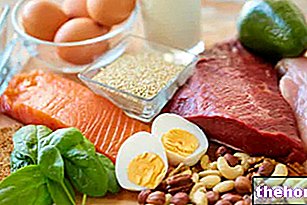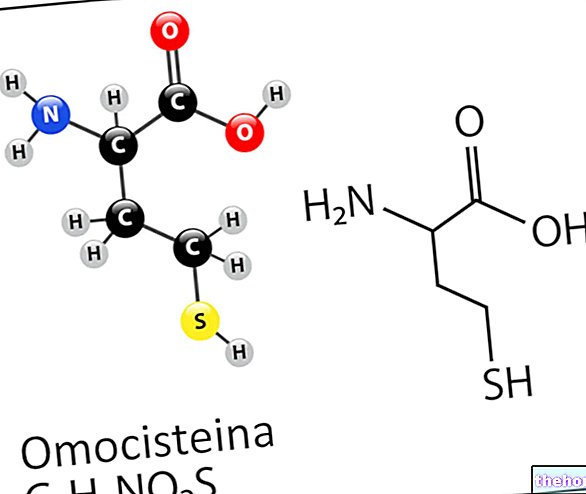Edited by Doctor Giancarlo Monteforte
" first part
Endocrine properties of fructose

- lower blood sugar (24h)
- lower insulinemia (24h)
- lower plasma concentration of leptin (24h)
As insulin and leptin are key signals in the long-term regulation of energy balance, this hormone profile could lead to:
- Increased hunger
- Increased calorie intake
- Decrease in energy expenditure
and thus contribute to weight gain and obesity. Studies are underway to support this hypothesis.
Fructose and sports activity
The first studies on the muscle metabolism of fructose date back to 1953, it was shown that:- the muscle can directly use fructose to synthesize glycogen;
- the fructose ingested before exercise determines saving of muscle glycogen (this figure depends on the nutritional conditions of the subject, if the diet of the days prior to exercise has recharged the hepatic glycogen then the fructose will be used by the muscle otherwise it will be used in hepatic glycogenosynthesis );
- the fructose ingested after physical exercise restores muscle glycogen but to a significantly lower level than glucose.
Small doses of fructose
All the studies that have highlighted the negative effects of fructose have used very high doses of fructose (> 20% of the caloric intake), the LARN SINU instead recommend not to take quantities of simple sugars greater than 10-12%.
When fructose was taken in reasonable doses (about 10% of total caloric intake) the results were very different and in diabetics there was improved glycemic control and increased insulin sensitivity.
Molecular mechanism:
- fructose stimulates the activity of the hepatic glucose kinase enzyme;
- fructose stimulates the uptake of glucose by the liver;
- fructose stimulates the activity of the glycogen synthetase enzyme and inhibits glycogen phosphorylase, thus stimulating the hepatic synthesis of glycogen.
Summary
- Liver and kidney are the most active organs in the metabolysis of fructose because they possess the enzymes of the specific pathway, in particular the liver (being the first organ to be reached by the fructose absorbed in the intestine) metabolizes about 50% of the circulating fructose.
- The heart, skeletal muscle and adipose tissue are however able to use the circulating fructose by placing it in the non-specific pathway.
- The scientific literature highlights the negative metabolic effects of fructose when taken in large quantities but also highlights the positive effects of fructose at "reasonable" doses. As in other situations it is the excess that generates pathology!
Bibliography
Intermediary metabolism of fructose
P.A. Mayes
Am J ClinNutr 1993
Adverse Effects of Dietary Fructose
A.R. Gaby
Alternative Medicine Review 2005
Fructose in medicines
J.K. Huttunen
Postgraduate Medical Journal 1971
Multiple forms of fructose diphosphatealdolase in mammalian tissues
E. Penhoet, T. Rajkumar, W.J. Rutter
Biochemistry 1966
The influence of fructose feeding on physical performance
B.W. Craig
Am J ClinNutr 1993
Muscle glycogen recovery after exercise during glucose and fructose intake monitored by C-NMR
A.J. Van Den Bergh, S. Houtman, A. Heerschap, N.J. Rehrer, H.J. Van De Boogert, B. Oeseburg, M.T.E. Hopman
the American Physiological Society 1996
Endocrine and metabolic effects of consuming beverages sweetened with fructose, glucose, sucrose, or high-fructose corn syrup
K.L. Stanhope, P.J. Havel
Am J ClinNutr 2008
Other Foods - Sweeteners Acesulfame K Aspartame Sugar beet Sugar cane Sodium cyclamate Dextrose Sweeteners Erythritol Fructose Maltose Mannitol Molasses Saccharin Saccharose Maple syrup Agave syrup Fructose syrup Glucose syrup Sugar sorbitol Articles Stevia Sucralitol sugar SWEETENERS Categories Alcoholic Foods Meat Cereals and derivatives Sweeteners Sweets Offal Fruit Dried fruit Milk and Legumes Oils and Fats Fish and fishery products Salami Spices Vegetables Health recipes Appetizers Bread, Pizza and Brioche First courses Second courses Vegetables and Salads Sweets and Desserts Ice cream and sorbets Syrups, liqueurs and grappas Basic Preparations ---- In the Kitchen with leftovers Carnival recipes Christmas recipes Light diet recipes tici Recipes for the Holidays Recipes for Valentine's Day Vegetarian Recipes Protein Recipes Regional Recipes Vegan Recipes




























